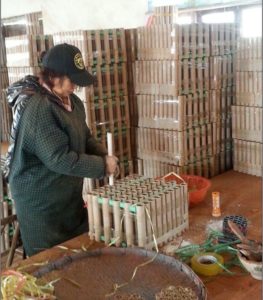Chinese New Year and it’s effects on Global Supply, specifically fireworks.
Fourth of July, USA. Bonfire Night, UK. New Years Eve, Global. Lunar New Year, China. These, and many more holidays and  festivals are celebrated every year with pyrotechnics. In many countries and towns, end users go to their local shop, and purchase these hand crafted articles that produce colorful light and noise for their celebrations without a thought as to how they got there.
festivals are celebrated every year with pyrotechnics. In many countries and towns, end users go to their local shop, and purchase these hand crafted articles that produce colorful light and noise for their celebrations without a thought as to how they got there.
If you are in the business of selling fireworks though, you should be aware the major effects that Chinese New Year can have on an already stretched, limited supply chain. Whether your a factory or broker in China, an importer, wholesaler, jobber or retailer of fireworks, this holiday has major impacts that affect supply no matter the date of your selling season.
China is aglow with success, Shanghai, Beijing, Hong Kong, just walking the streets it is apparent in the cars being driven, the clothes people are wearing, and the overall confidence of the people. In recent years, that success has made it into the interior mainland as well, places where fireworks are made, centered around the city of Liuyang in Hunan. Liuyang is a tiny city (by China’s standards) Of 1.3 million people. For centuries Hunan was the countryside, fancy cars and flashy lights were a thing of the big cities. Hunan and the surrounding areas supply 95% of the world’s fireworks, which equates to more than 10,000 40′ long shipping containers full.
 China’a domestic market has always been a large driving force in the enthusiam and manufacture of fireworks, but demand had already been on the wane in larger cities, where there are restrictions on letting off fireworks outside the Lunar New Year period. Younger consumers in the cities also see fireworks as old-fashioned, they said, and were less inclined to let their children play with them due to a lack of space and safety concerns. President Xi Jinping’s anti-corruption drive also prompted government departments and state-owned enterprises to tighten the spending of public money, including lavish celebrations and the gifting of fireworks to employees for Lunar New Year. Tighter safety standards and government regulations have also increased compliance costs. That has all led to rapid consolidation in the industry in the past two years – from the 946 fireworks companies in Liuyang as of late 2015, 558 remain today, according to the city government’s Firecrackers and Fireworks Management Bureau.
China’a domestic market has always been a large driving force in the enthusiam and manufacture of fireworks, but demand had already been on the wane in larger cities, where there are restrictions on letting off fireworks outside the Lunar New Year period. Younger consumers in the cities also see fireworks as old-fashioned, they said, and were less inclined to let their children play with them due to a lack of space and safety concerns. President Xi Jinping’s anti-corruption drive also prompted government departments and state-owned enterprises to tighten the spending of public money, including lavish celebrations and the gifting of fireworks to employees for Lunar New Year. Tighter safety standards and government regulations have also increased compliance costs. That has all led to rapid consolidation in the industry in the past two years – from the 946 fireworks companies in Liuyang as of late 2015, 558 remain today, according to the city government’s Firecrackers and Fireworks Management Bureau.
So, while domestic use inside China is down, the closing of factories has crippled manufacturing capacity at an even faster rate. Factories that remain open struggle to fill orders to supply the globe, and Chinese New Year is one of their biggest struggles. The average age of a firework factory laborer is 55 years old, and many are retiring or seeking other jobs every year. Jobs that are safer, pay better and offer steadier hours such as the Apple manufacturing opening a factory nearby employing over a thousand people, many of who were once making fireworks. One of the factories major challenges, is that it is common for 30% or MORE of workers to not even return to their jobs after the New Year, leaving them struggling to find replacement help and train them as fast as possible.
Chinese New Year 2019 is February 5th. Workers will take an average of 23 days off of work during this time. Before the shut down, factories are careful to dwindle down their powder and component storage, as well as any stock so as not to have to store or warehouse it during the shut down. This means that once production does fire back up after the holiday, the first days and weeks are spent making powders, stars, tubes, fuse and other components needed to product a final product. This can leave a 3-5 week gap sometimes in product actually being finished and loaded for shipping and greatly affect the factpry’s scheduling for the year.